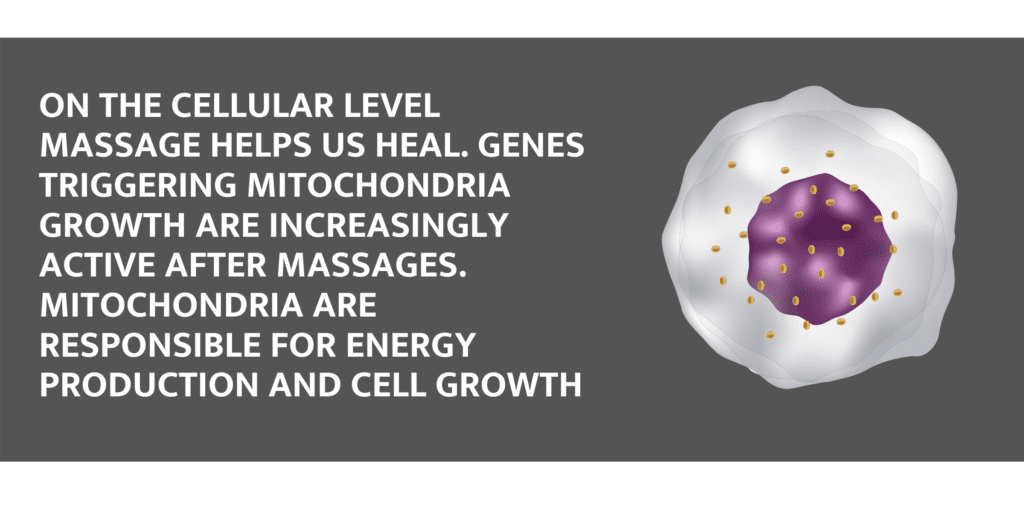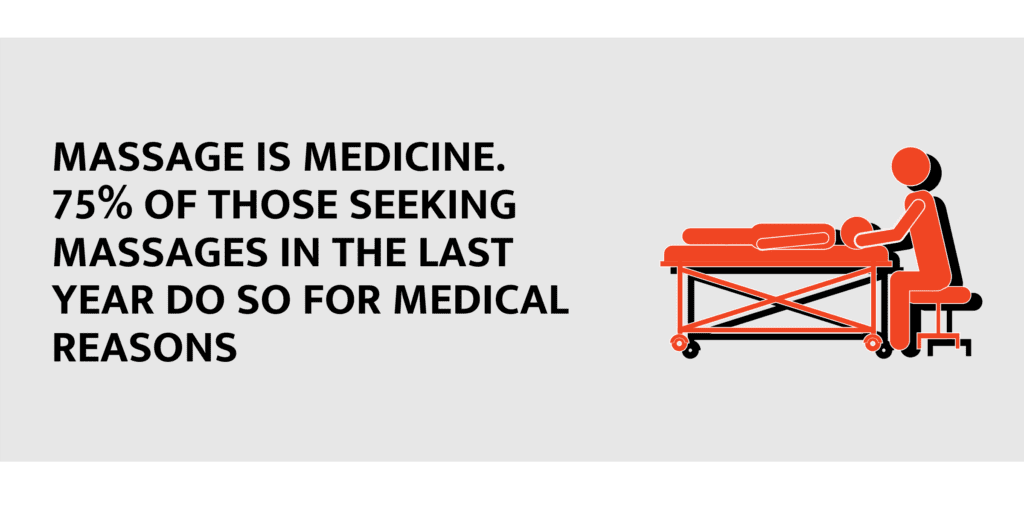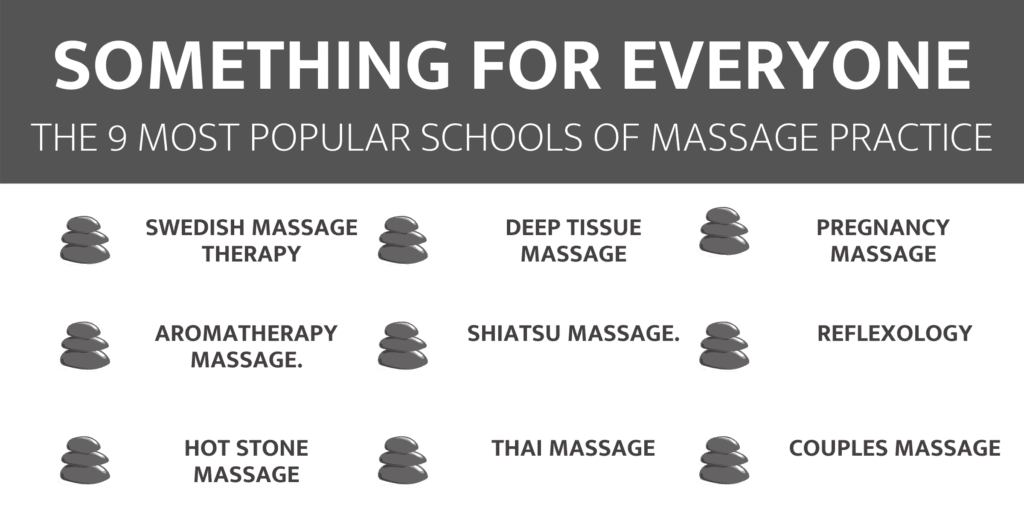Key Takeaways:
- Massage therapy offers diverse career paths with minimal traditional schooling, focusing on hands-on practice and continuing education.
- Many massage therapists operate their own freelance or small businesses, allowing them to be their own bosses.
- Education options include associate and bachelor’s degrees in relevant fields, with many opting for certificate programs in specialized massage techniques.
- Massage therapy plays a significant role in various medical fields, such as orthopedics and sports medicine, providing relief and recovery for many.
For many, massage therapy is an occasional “splurge” or luxury they afford. For some, regular massage is a path to recovery from a traumatic accident or a necessary component for a pain-free life. Massage is vital in many medical disciplines, including orthopedics, sports medicine, occupational therapy, and physical therapy. Massage therapists work in ortho clinics, gyms, outpatient rehab centers, and from their own homes or small business spaces.
There are many distinct forms of massage therapy, each with varying degrees of expertise required to call oneself a licensed practitioner. One thing most types of massage therapy have in common is that they often don’t need a great deal of traditional schooling and instead rely on hands-on practice and the gaining of continuing education credits.
Additionally, massage therapy is an excellent way for individuals to “become their own boss,” with the majority of massage therapists running freelance or small business ventures.
Here at BestHealthDegrees, we know that there are many ways to enter into helping and health-related careers. Massage therapy may not be the first discipline many individuals think of when they think of “health.” But for millions around the world massage has freed them from chronic pain, helped them to recover from injuries, or given individuals much-needed time to relax and unwind.
In this guide we’ll look at the types of massage therapy degrees (and other educational options) you can pursue, as well as some settings where you can work once you’ve completed your massage therapy education.

Table of Contents:
- What Types of Massage Therapy Degrees Can I Pursue?
- Can I Pursue Massage Therapy Education Online?
- What Types of Massage Can I Specialise In?
- What Can I Do With a Massage Therapy Degree?
Not seeing what you’re looking for? Check out our related content below:
- 10 Most Affordable Bachelor’s in Nutrition Degrees
- The Best Scholarships For Health Care Students
- What is Holistic Nursing?
- Is an Associates Degree in Health Care Worth It?
- Rankings of The Best Healthcare Degree Programs
What Types of Massage Therapy Degrees Can I Pursue?

Though not particularly prevalent at American colleges and universities, massage therapy programs are available at the associate and bachelor’s levels. More commonly, trade, vocational, or community colleges offer certificate programs in massage therapy, or individuals pursue training in one type of massage from massage schools.
At the associate degree level, two primary academic paths can be pursued in massage therapy:
- Associate of Applied Science in Massage Therapy
- Certificate Programs in Massage Therapy
Associate degrees typically require 60 credit hours for completion, which for many students requires 2 years of full-time study. Within an associate in massage therapy, students won’t just study massage therapy, but will endeavor upon courses meant to promote general literacy and critical thinking at the collegiate level.
These courses, called general education requirements, are likely to include some collection of the following:
- Writing, Composition, or Speech
- A course in the natural sciences
- A course in the social sciences
- A college-level math course
- Physical education
- A course in the humanities
- A course in fine arts
- A course in technical literacy
Upon completing some of your general education requirements, students with an associate degree in massage therapy will begin taking major courses. These can include a selection of the following:

- Kinesiology
- Biology
- Anatomy and physiology
- Practical Massage
- Holistic health
- Foundations of Physical Therapy
- Massage business principles
- Techniques in massage therapy
For students who don’t want to pursue an entire degree, many locations that offer associates in massage therapy also provide certificate programs. Certificate programs typically require 2-5 courses, or up-to one quarter of a full degree program. These courses typically don’t tackle prerequisites and jump right into practical knowledge of a subject.
Some of the courses you may take within a certificate program in massage therapy include:
- Practical Massage
- Holistic health
- Foundations of Physical Therapy
- Massage business principles
- Techniques in massage therapy
At the bachelor’s level, students can pursue a range of degrees related to massage or that may include some massage. These degrees include:
- Bachelor’s in pre-physical therapy
- Bachelor’s in occupational therapy
- Bachelor’s in Kinesiology
While many of these degrees require additional school work at the post graduate level to gain the jobs they’re named for, they often do cover many topics surrounding massage therapy and kinesthetic healing.

Additionally, students may choose to major directly in massage therapy with a bachelor of applied science in physical therapy.
Bachelor’s of applied science in physical therapy typically requires 120 credit hours, which for many students takes roughly twice as long as gaining an associates degree. These four-year programs provide a solid basis on which to study a range of massage techniques, underlying health sciences, and the business of massage therapy. It’s hard to find bachelor’s degree programs that are 100% massage-centered. Rather individuals are likelier to find related more general degrees that allow them to focus on massage to a great extent.
Similar degrees may include:
- Holistic Health
- Alternative Medicine
- Asian Holistic Health
- Integrative Health
- Physical therapy
- Among others
Just as in associates degree settings, students will be required to pursue general education courses. These courses are aimed at ensuring graduates of the program are well-rounded thinkers with a baseline skill set one would expect from a college graduate.
Common general education courses at the bachelor’s level include:
- Writing, Composition, or Speech
- A course in the natural sciences
- A course in the social sciences
- A college-level math course
- Physical education
- A course in the humanities
- A course in fine arts
- A course in technical literacy
Within a bachelor’s in massage therapy, students should expect to take 2-4 times as many major courses as in an associates degree (depending on how your program is structured). Some commonly offered courses within a bachelor’s in massage therapy include:
- Anatomy and physiology
- Kinesiology
- Foundations of Nutrition
- Theory of Chinese Medicine
- Chiropractics
- Yoga
- Acupuncture
- Swedish Massage
- Reflexology
- Deep Tissue Massage Techniques
Beyond degree programs, many massage therapists actually don’t pursue a degree in the subject.

If you know you want to enter the massage therapy field and don’t want to pursue a full-fledged degree, keep on reading to gain a general understanding of what’s required to become a licensed physical therapist.
While requirements vary from state to state, a general overview of what most states require includes the following:
- Complete a certificate or diploma program (full degree not required)
- Sit for an Approved National Examination within massage therapy
- Two common national exams that most or all states accept include:
- Massage and Bodywork Licensing Examination (MBLEx)
- The Board Certification Exam in Therapeutic Massage and Bodywork (BCETMB)
- Two common national exams that most or all states accept include:
- Apply for licensure within your state (or within multiple states)
- Stay up-to-date with professional standards and developments in your field with continuing education credits
While being good at massage therapy isn’t easy, and massage therapy requires a range of both business, personal, and massage skills, entry into the field as a licensed practitioner does not take a great deal of school work or experience.
Not seeing what you’re looking for? Check out our related content below:
- 10 Most Affordable Bachelor’s in Nutrition Degrees
- The Best Scholarships For Health Care Students
- What is Holistic Nursing?
- Is an Associates Degree in Health Care Worth It?
- Rankings of The Best Healthcare Degree Programs
Can I Pursue a Massage Therapy Degree Online?
As you likely already know, massage is a very “hands on” discipline. This means that almost 100% of training — for licensure purposes — occurs in person. This doesn’t mean that you can’t take some courses that will contribute to your future licensure or massage career online, though.

For many individuals, a functioning massage therapy business is just that, a business. Marketing skills, some accounting, and the management of any individuals helping you with your services all require some degree of business know-how. While it’s unlikely that your massage business will turn into a massive business enterprise, most massage therapy degree programs do require business courses that can be taken online.
Additionally, massage therapy fits into a continuum of health and wellness services. Individuals who understand broader health movements or how massage therapy may fit into treatment plans related to physical therapy, occupational therapy, athletics, or wellness may find more employment options (or work more specialized way). Courses in all of these related disciplines are available online.
All of this is to say that, at the very least, you can pursue courses that contribute to online massage therapy. And you can even complete a sizable chunk of a massage therapy degree program (including general education credits) online.
In summary, you can’t pursue massage therapy 100% online, though some programs can be pursued as “hybrid” degrees.
Here at besthealthdegrees, we have provided thousands of students and future health care practitioners with advice on education (often online). One note we try to make when applicable is that even when online degrees are available, they aren’t the best choice for all students.
Below we’ll list some of the pros and cons of online education. And just note that there’s not even one precise answer for each individual. Rather, there are times and places where online education may be better and times and places when in-person degrees are the better choice. It depends on your needs in the moment and what you seek out of your education.
Pros of Online Education
- Online education is often more affordable than in-person education, with fewer fees, more flexibility, and less money spent on moving or commuting.
- Online education saves you time, both through alleviating the need to move or commute to school, as well as through a greater range of flexibility-enhancing features
- Many online degree programs are built specifically for adult or non-traditional students, these support measures may not be in place in in-person programs
- The same degree you can get in an in-person program
Cons of Online Education
- Online education often relies on students being better “self starters” being able to motivate themselves to do their work without anyone asking them to
- Online education does not always provide the same access to quality discussions that are present in an in-person degree
- Some programs just aren’t available online
Not seeing what you’re looking for? Check out our related content below:
- 10 Most Affordable Bachelor’s in Nutrition Degrees
- The Best Scholarships For Health Care Students
- What is Holistic Nursing?
- Is an Associate Degree in Health Care Worth It?
- Rankings of The Best Healthcare Degree Programs
What Types of Massage Can I Specialise In?

A majority of massage therapists start as general massage therapists. They potentially took one or two extra classes in a given technique type. Still, many techniques are learned over the years from coworkers, attending continuing education events, or seeking additional certifications.
With that said, you can specialize in massage areas right from the start. We’ll lay out a few of the most common “schools” (or styles) of massage below with brief descriptions.
Swedish massage is perhaps the most widespread form of bodywork today. The general aims of Swedish massage include enhanced blood flow throughout the body and enhanced overall relaxation. Some of the most common techniques employed in Swedish massage include long fluid massage strokes in the direction of blood returning to the heart. Additional techniques may include rapid circular movement over muscles.
Aromatherapy massage employs techniques from a range of holistic and alternative healing methods. Aromatherapy massage incorporates Swedish massage methods and knowledge and passes down wisdom regarding plant extracts that can promote breathing, circulation, and relaxation. Individuals are treated with Swedish massage with essential oils and extracts rubbed on their skin or inhaled.
Hot stone massage utilizes an ancient tactic for holding long-term heat sources in stone. Basalt, a type of volcanic rock, is often used for its ability to shed heat slowly. Stones are heated to between 130 and 145 degrees and placed at strategic locations around the client’s body while a massage commences.
Deep tissue massage often treats musculoskeletal and athletic injuries that revolve around strains, sprains, and locations where scar tissue has developed. This form of massage centers around prolonged slow-moving pressure into the deep inner layers of ligaments and muscles.
Shiatsu massage has roots in traditional Chinese medicine and is a part of traditional Japanese medicine. Often taking place on a low table or the floor, this form of massage may see the massage therapist get on top of the client to exert body pressure at specific points. Some of the general features of this type of massage include applying pressure to specific points of the body in a rhythmic fashion.
Thai massage originated in India some thousands of years ago. This ancient healing pressure relies on light pressure and a series of well-established stretching poses. Unlike many other massage techniques, Thai massage involves the client actively participating in the massage.
Reflexology is built on several ancient practice styles and is built around the belief that certain body parts are connected to the functioning of specific organs. Reflexology massages often center around massages to the hands, the feet, and the ears.
Pregnancy massage is one example of many where individual therapists specialize in providing treatment to a specific type of person or people with a specific challenge or ailment type. Focus areas in this massage type include enhancing the body and joint function, reducing stress and fatigue, and promoting circulation and quality breathing.
Not seeing what you’re looking for? Check out our related content below:
- 10 Most Affordable Bachelor’s in Nutrition Degrees
- The Best Scholarships For Health Care Students
- What is Holistic Nursing?
- Is an Associates Degree in Health Care Worth It?
- Rankings of The Best Healthcare Degree Programs
What Can I Do With a Massage Therapy Degree?

The central answer here is right in the question. Massage therapy degrees prepare you to be a massage therapist. As we mentioned in the last section, this can entail many different things through specialty areas. Additionally, there are different levels of certification that individuals can pursue which may change the rate at which you can bill, whether you can teach classes, and so forth.
While nearly all massage therapists end up doing a decent bit of massage, some of the different job titles that one can achieve with a massage therapy degree (or diploma, or certificate) include:
- Massage therapist
- Licensed Massage Therapist (LMT)
- Certified Massage Therapist (CMT)
- And Licensed Massage Practitioner
Massage therapist is the most general term for someone who performs massages as part of their job duties. All of the following jobs will also be “massage therapists.” Though if an individual has a more specialized name, it often means that they hold an additional certification or licensure.
Massage therapists typically work in one of two settings: spa businesses run by others or their own massage business. Individuals running their own massage business can typically bill much higher hourly rates. However, they will also be responsible for marketing, attaining the space where massages will occur, and other routine business tasks.
Due to many individuals working part-time in massage therapy roles, it’s hard to calculate particularly precise earnings numbers. Though it’s not unheard of for exceptionally talented massage therapists to bill close to $1/minute for their time (often in 60 or 90 minute blocks). Within chain spa settings, massage therapists typically make around half of this or $25-$30/hour that they are working.
Licensed massage therapists (LMTs) are massage therapists who have either voluntarily or due to a state mandate obtained state licensure. In states where licensure is voluntary, becoming a licensed massage therapist is a way to show dedication to and knowledge in your field. In states where it is required, it’s just part of starting your massage therapy practice. Voluntary licensure states may lead to greater earnings as a licensed massage therapist as not all massage therapists practicing in the state will be licensed.
State Licensure
There are currently three collections of states with different regulations regarding licensure. These include:
- Wyoming, Kansas, Oklahoma, Minnesota and Vermont do not license massage therapists
- Alaska, California, Indiana and Virginia require licensure of massage therapists
- All other states provide optional licensure status for massage therapists
While there’s a wide range of earnings for licensed massage therapists, typically, individuals working full-time in the roll can expect to make $40,000-$60,000 a year. Many talented individuals can also make a suitable living working part-time at massage therapy but billing at higher rates.
Certified Massage Therapists (CMT), also known as board-certified massage therapists, must pass the most rigorous massage-related tests. First, individuals must attend an NCBTMB Assigned School, then pass their state boards, which include several exams and showcasing of their talents. Individuals who are board-certified massage therapists, however, do tend to earn more. Around $7,000 a year more than massage therapists or licensed massage therapists.
As with other massage therapy roles, the nature of the work often makes a full-time 40-hour work week impossible. The national average for full-time massage therapists is just over 26 hours a week (a lot of massage appointments).
The range of earnings as a certified massage therapist varies widely and depends on your client’s load and location. National averages range from $28,000-$78,000 a year. Though becoming board certified does tend to push individuals who are regularly working in the field towards the higher end of the spectrum.
Finally, related knowledge-based roles have become a potentially lucrative and flexible way to extend massage therapy earnings in recent years. Individuals who lead seminars, webinars, and publish materials for aspiring massage therapists or the general public interested in holistic health may make substantially more than typical massage therapist wages. As with almost every field, creating an online brand can significantly elevate opportunities and monetization opportunities.
Not seeing what you’re looking for? Check out our related content below:
- 10 Most Affordable Bachelor’s in Nutrition Degrees
- The Best Scholarships For Health Care Students
- What is Holistic Nursing?
- Is an Associate Degree in Health Care Worth It?
- Rankings of The Best Healthcare Degree Programs
- What Can You Do with a Human Service Degree?
- Best Types of Counseling Degrees
- What Can You Do With a Master’s in Psychology Degree